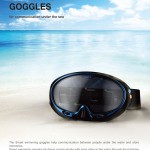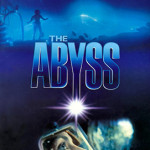
People seem fascinated by the prospect of purchasing virtual real estate at Second Life, but if you ask me, Google Earth is a better place to stake your claim. For instance, I am studying deep sea-fans, or gorgonians, in the West Atlantic twilight zone between 50-150 m. Many of these have their first description in the reports by Wright and Studer (1889) of the HMS Challenger expedition 1873-1876. This expedition is a piece of history that could come alive again in a “Google Ocean” environment.
The main difference between then and now is that 19th century biologists studied dead and broken colonies dredged or trawled from the abyss, while modern scientists use submersibles and ROVs to study the organisms in their natural habitat, in all their living splendor. An online expedition in Google Earth today could incorporate georeferenced text, photos, audio, and live video, plus graphics and animation to help illustrate these bizarre and fascinating benthic habitats.
The original species descriptions for my gorgonians are microscopic, lacking any knowledge of community ecology. Species are well illustrated, but the descriptions are quite dry. We have no idea what these animals looked like when they were alive. This is necessary so we can identify them in-situ. So, I’m seeking historical background to put the Challenger observations in context.
Like a modern guy, I quickly turn to Amazon for background material (books) and Google Earth for a visualization (maps). As a deep-sea biologist, the first thing I need to know is “where did the HMS Challenger collect their samples, exactly”? This a simple map based function. The chances I will find the Challenger Expedition on Google Earth are good, actually, thanks to “Hill” a “Master Guide” at Google Earth, and a professed Google Earth “addict”. He’s uploaded and georeferenced the maps at this site here so I can tell at a glance where they’ve been, and where they’ve not.
You may search the H.M.S. Challenger Library at 19th Century Science. I see lots of room for improvement to this unique format and presentation, but it makes me wonder, how can I see more of this kind of thing on Google Earth? Where will it develop and grow? And, when was the last time we sent a ship around the world collecting deep-sea samples for such a broadly interdisciplinary group of scientists?






that’s awesome!
Cool post Peter!
And, when was the last time we sent a ship around the world collecting deep-sea samples for such a broadly interdisciplinary group of scientists?
Enter, The Beagle Project!
Actualy, Google Earth is rather boring, IMHO. I mean, sure if you want to look at some house you’re planning on buyin in RL, but for science exhibits? Seriously, Google Earth can’t be programmed. No building is functional, no science exhibit can be customized in a few seconds time “in world,” etc.
If you want ideas for educational uses of Second LIfe, go talk to the on-duty librarian at the LIbrary of Second LIfe. He or she (or it) will steer you to myriad educational exhibits and things to do. IF you want to see them really get excited ask them a non-SL-related question. You know, like the ones you would as a real life librarian…
Oh wait, they ARE RL librarians…
I think there is room for both, but in truth I agree with Peter that Google Earth is an exciting tool for research, visualization and communication in science. University of Delaware did some excellent physical oceanography visualization in Google Earth. Georeferenced data layers with salinity, temperature, wave height, etc.. all updated automatically from their servers which are fed from buoys and other remote instrumentation packages.
Someone else had a remote sensing overlay showing chlorophyll data along with a number of phys. oceanography layers for the northwest US, again automatically generated and updated. While the capability has been there in special or one off packages, now I can access them, and better yet so can a class of first year undergrads, or 3rd graders studying Long Island Sound. They mostly intuitively understand GE and since they can’t break it, they feel free to twist it and tweak it.
Ohmygosh. We simply have to do this for the Beagle voyage! I’ve been using Google maps to do something similar, by entering Fitzroy’s lat/long data, but it’s painstaking. Do you think Hill could help us? I’m also trying to recruit one of my bioinformatics peeps to help out with it – he says he can not only map the data onto a google map but can transform it into a zoomable map on NASA’s ‘blue marble’ image (infinitely more beautiful than the Google maps format). Want.
Is there anywhere repository for the full Challenger Reports (as opposed to page only) in PDF format?
Did you check the 19th Century Science link? I found full reports for Alcyonacea.
I must be missing it somewhere. All I find is individual page pdf’s. I guess I’ll slurp them all and compile the complete report into one PDF.
I understand your problem, now. You want the whole thing, or each taxon, as a single pdf, right? I don’t see that. If you want every page there might be a way to batch transfer using ftp and assemble using adobe.
There is a pdf book layout you can read through at 19th Century Science, if that helps.